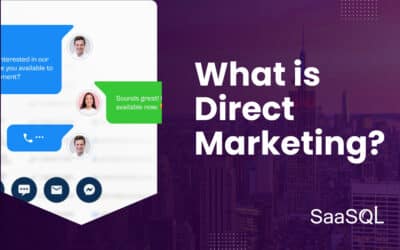DIGITAL MARKETING STRATEGIES THAT WORK
Through our experiences developing digital marketing strategies for over 800 businesses and organizations, we have identified two critical aspects of highly-performing digital marketing strategies that businesses of every size, industry and complexity have increasingly ignored over the last 20 years.
The byproduct of an abundance of data and digital technologies that make it feel easy to build influence over a target consumer group, these 2 critical aspects of a highly-performing marketing strategy were once obvious and commonplace. Today, they represent a strategic advantage and act as the secret to profitability and growth for local companies and organizations.

COMPREHENSIVELY UNDERSTAND YOUR TARGET CUSTOMER
The first step in developing powerful digital marketing strategies might seem obvious, but it isn’t. Having a clear and comprehensive understanding of the target customer has been defined as “buy some third party data” in the digital age. It is the cornerstone of all digital marketing strategies that work effectively. To be actionable it’s critical that we move beyond this surface-level definition of the customer. To do this, we need to ask deeper questions that establish an understanding based on psychology and emotion.
- Where do they live and where do they work? Why?
- What motivates & inspires them?
- What do they value?
- What are they lacking?
- How do they compensate for what they lack?
- In what way is their life incomplete because of what they lack?
- Who, in their lives, shares in these challenges with them?
- What trigger needs to happen that finally drives them to make a change?
- What would it mean to them, and what might they do if these problems were solved?
None of these questions include the obvious data points: demos, geos, firmographics, finances, behaviors. It’s not that these insights don’t matter (they’re incredibly helpful) but they’re obvious and (in partnership with a strong data provider) they’re plentiful. The real point is, without understanding what will motivate somebody to seek change, this type of data is largely worthless.
SOLVING PROBLEMS & AVERTING LOSS: THE CORE DIGITAL MARKETING STRATEGY
Once the target customer is defined, successful digital marketing develops a communication strategy that guides a deepening relationship over time. To do this, we need to begin by recognizing that there are two reasons consumers decide to make a change:
- They are passionately motivated to attain something.
- They fear losing something.
This language is deliberate because it highlights a key principle to good marketing. It is far easier to tap into a consumer’s fear of losing something, than it is to make people “passionately motivated” to change something. Prospect Theory, a behavioral economics subgroup refers to this phenomenon as “Loss Aversion”. Loss Aversion tells us that when presented with the opportunity to attain something extraordinary, or the fear of losing something comparatively incidental, consumers are more motivated to avoid loss. In fact, studies have found that they are 250% more sensitive to loss than the potential for gain.
What does this mean when developing a successful digital marketing plan that differentiates your brand from your competition?
While aspirational messaging shouldn’t necessarily be ignored, it does mean that making loss aversion a key aspect of your communication strategy important. To do this, we first need to establish which “key losses” our products / services help our target customers to avoid.
Then, great digital marketing strategies build a communication plan that tells that story. In that way, rather than marketing features and benefits, or claiming to be the best at x, y or z, great marketing shines a light on a problem the consumer may not even be aware they have. It is done best when the information is presented through the lens of those psychological questions we asked ourselves earlier.
- What happens if your target customer chooses not to make a change?
- What have they unknowingly sacrificed doing things as they’ve done them?
- How is it currently affecting them financially?
- How much time are they losing?
- What benefits will they continue to forego?
- What dangers lurk on the horizon?
- How much time do they have left to make a change?
- What happens if they delay?
- In what way might their status change if nothing is done?
At a time in which we put most of our attention to decreasing CPMs and CPCs while creating attribution models that effectively help calculate ROAS, this type of strategic effort is woefully missing from most digital marketing strategies.
It’s an advantage for each company who’s willing to do that work; to combine traditional marketing frameworks with the data and technology that we enjoy today.







